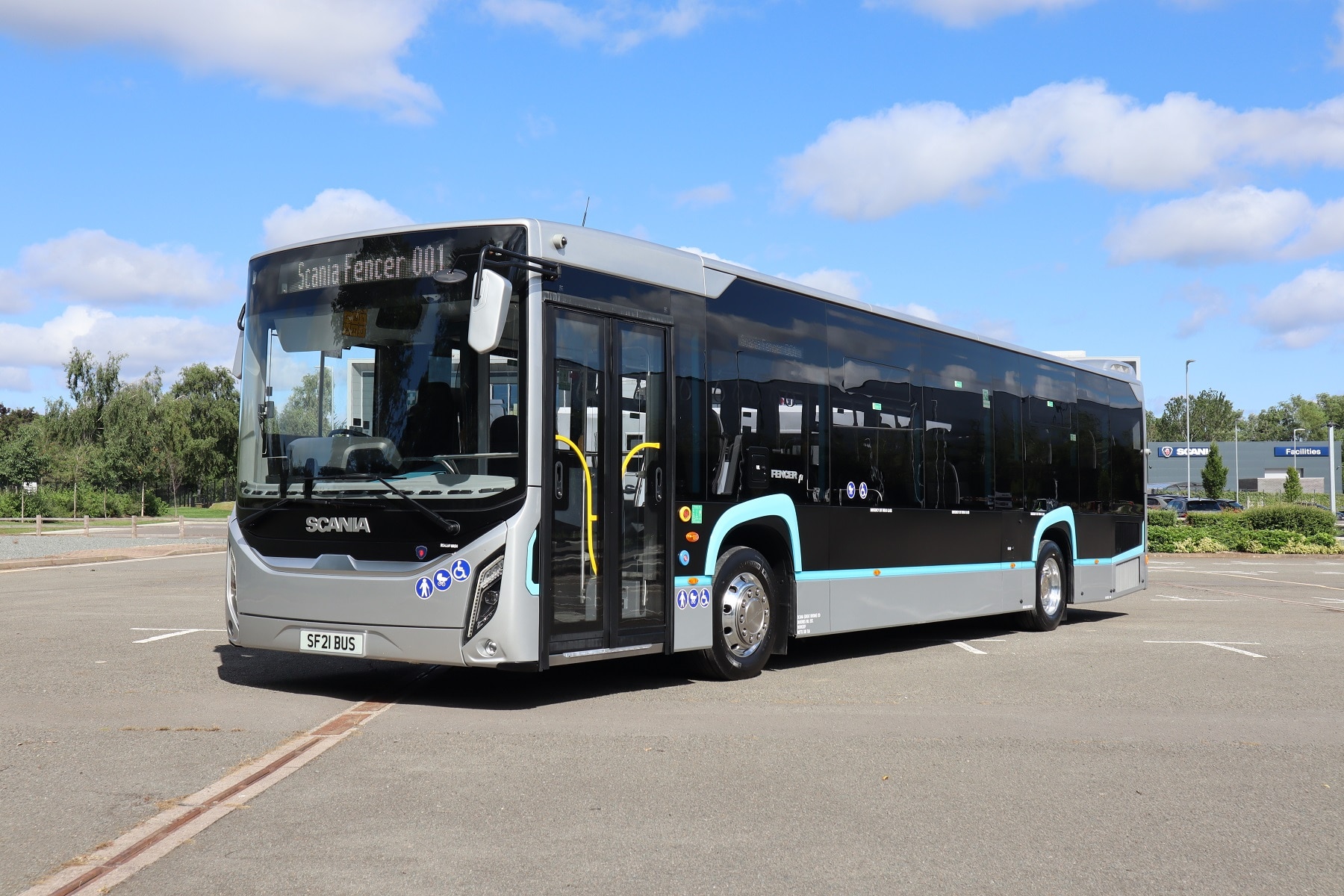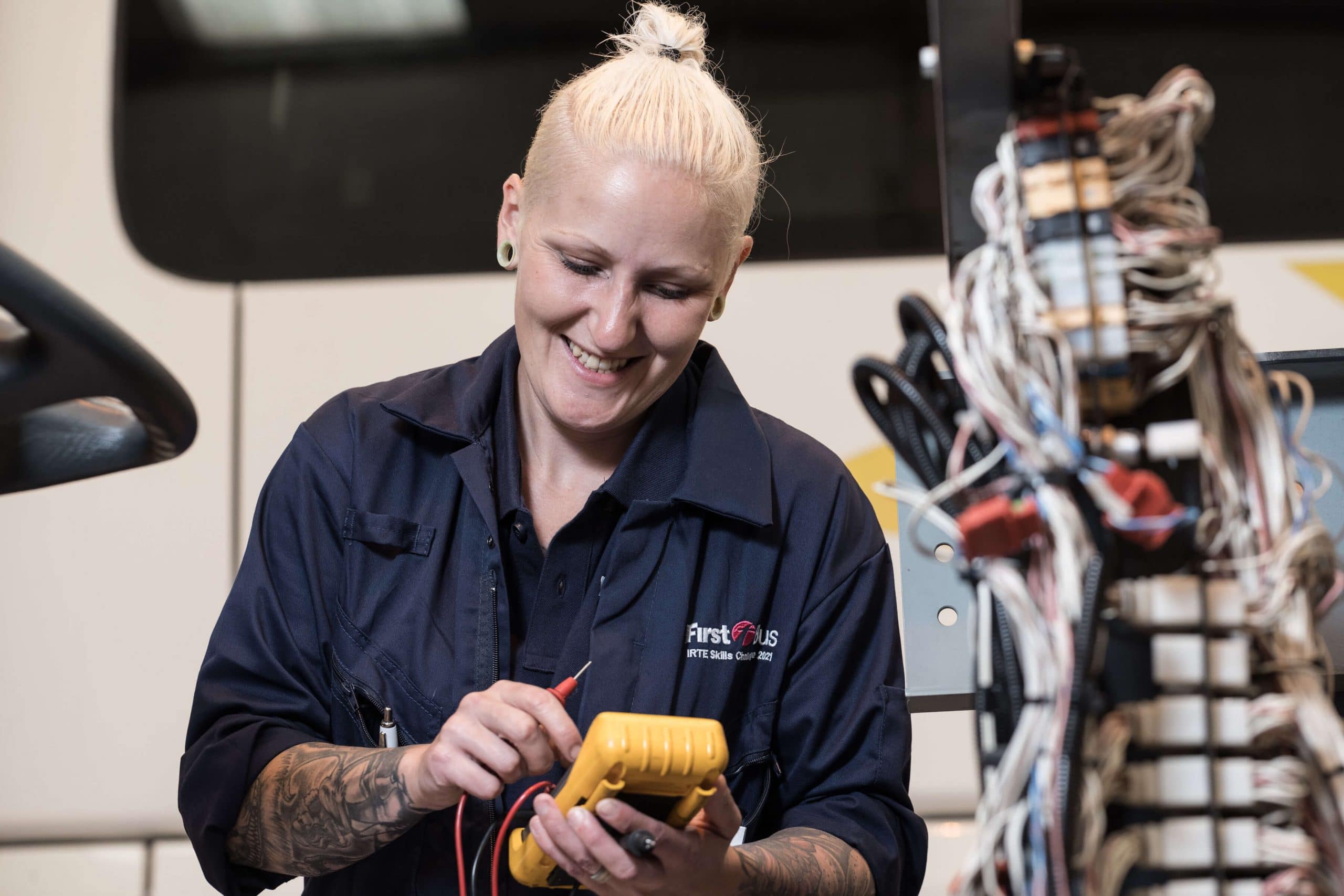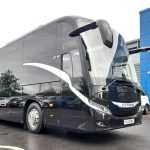Scania continues to pin high hopes on its Fencer range, which debuted in f1 form and when complete will provide a diverse line-up of bus products, including a double-decker and the option of battery-electric power across the board.
The global launch of the Fencer was in the UK in May. The f1 is a heavyweight low-entry single-decker, with the first example uniquely using the current generation K 280 UB diesel chassis. That is to give the opportunity to showcase the body aspect, which Higer will contribute across the complete Fencer range.
That vehicle has been used for marketing and early demonstration purposes. It is a 44-seat 12.2m example, although the Fencer f1 will also be available at 10.9m. Future examples will be mounted on a Scania’s forthcoming new modular chassis. The first of those to arrive here are due in Q1 2022, at both lengths and with a diesel powertrain. A battery-electric Fencer f1 is expected to debut towards the end of 2022.
Two engine options for next-generation diesels
While the tide is turning rapidly towards zero-emission for many new bus purchases, Scania has already stated that it sees a continuing medium-term demand for diesel in some applications.
When specified thus, the next generation chassis will have a choice of two engines: The 6.7-litre DC07 or the 9.3-litre DC09, both at Euro VI step E. Each will be rated at 280bhp although the larger unit is 200Nm ahead on torque.
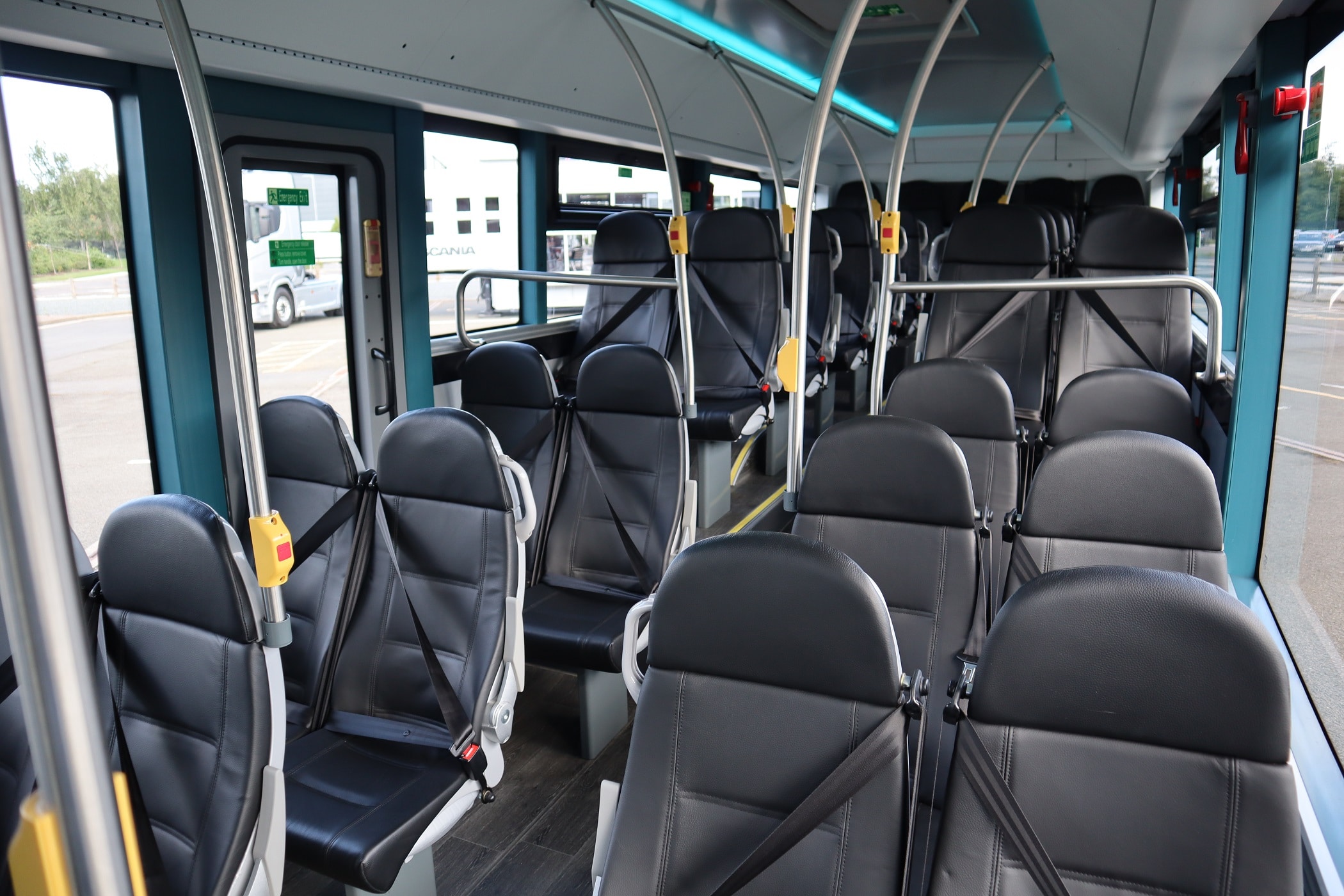
Neither engine will require exhaust gas recirculation to achieve the required emissions standard. Instead, they will utilise only selective catalytic reduction. They will be coupled to the ZF EcoLife 2 automatic gearbox.
The DC07 will give a significant weight saving over the DC09. Equally importantly, the smaller unit is compatible with engine stop/start and a radiator e-fan. As a result, certification of the DC07-equipped Fencer f1 as a Low Emission Bus is on Scania’s roadmap.
The OEM’s connected services will also be fitted to the next batch of Fencers to arrive. That will include telematics to monitor both vehicle and driver performance.
Scania aftersales prep underway before next Fencer f1 arrivals
UK Bus and Coach Fleet Sales – Account Manager James Thorley adds that while the debut of models from the Fencer range is a staged process, implementation of the line-up’s support and service strategy is underway on a rapid trajectory. Parts for the f1 are already here and work on the aftersales network is progressing.
The first Fencer has already visited Scania’s Loughborough technical centre for ‘train the trainer’ tuition. That ongoing work will soon extend to coach and bus specialists within the dealership network.
That vehicle is also being used to refine some minor aspects of the body specification based on industry feedback. Higer builds Fencer bodies in a factory that is dedicated to its partnership with Scania; while there has been no ability for representatives of Scania (Great Britain) to travel to China during the build process for the first f1, James says that the respective teams have engaged constructively via online methods throughout the process.
Scania Fencer f1 demonstrator specification is high
routeone was recently able to further examine and drive the initial Fencer f1. What is clear when the model comes under scrutiny is that it is a versatile product that will satisfy applications in addition to the core urban bus pitch.
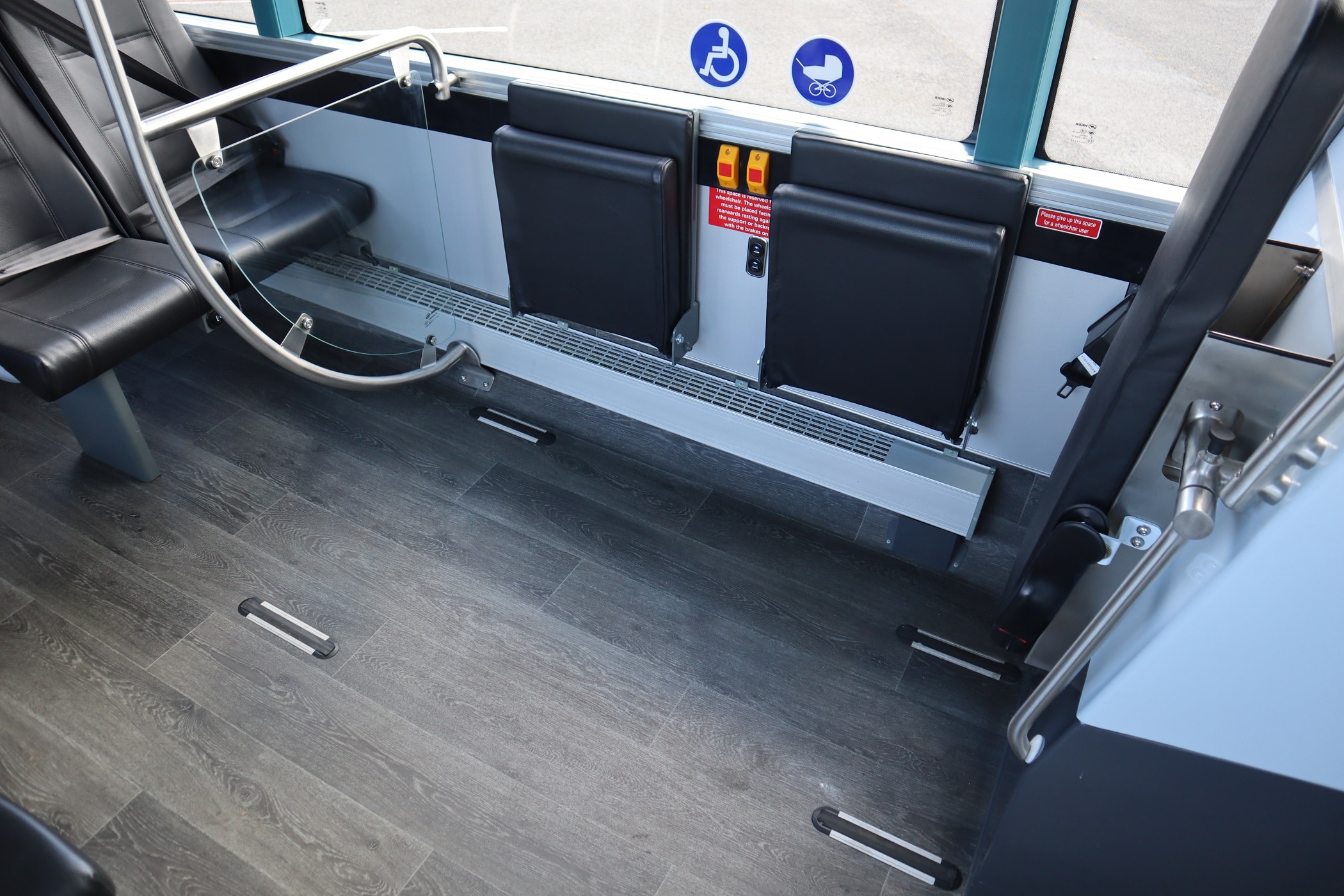
Scania has purposefully up-specified the seed vehicle. Among its most noticeable external features are the turquoise ‘flashes’ over the wheel arches.
On the demonstrator, they are complemented by strips immediately above the skirting panels. Within those strips are LED lights.
The depth of the side glazing is constant from front to rear, but as the chassis rises ahead of the drive axle to clear the engine, the windows become a lot smaller from a passenger’s perspective. The air intake is roof mounted because of the glazing arrangement.
While the first Fencer f1 has rear view mirrors, cameras are on the roadmap for the range, along with nearside blind spot assistance as part of an advanced driver assistance system.
Scope for versatility on the inside
While one of the Fencer’s positives is the eventual extent of its driveline choice, the demonstrator f1 also serves to illustrate that the model offers good scope for customisation inside. Although it can be specified for urban high-volume operation – with a two-door variant likely to debut on the battery-electric platform, says James – there are clearly other uses that it will suit.
One of those will be the small but relatively consistent market for a heavyweight single-decker that can undertake rail replacement and shorter-distance private hire. The seed Fencer f1 has high-backed seats, and all forward-facing positions are fitted with three-point belts.
It also has a single seat on each side immediately ahead of the front axle. Those will grow slightly on later examples to be ‘seat and a half’ positions to suit passengers with a young child. Fitment of separate bays for a wheelchair user and a buggy will also be available; the initial Fencer f1 has just one, on the offside.
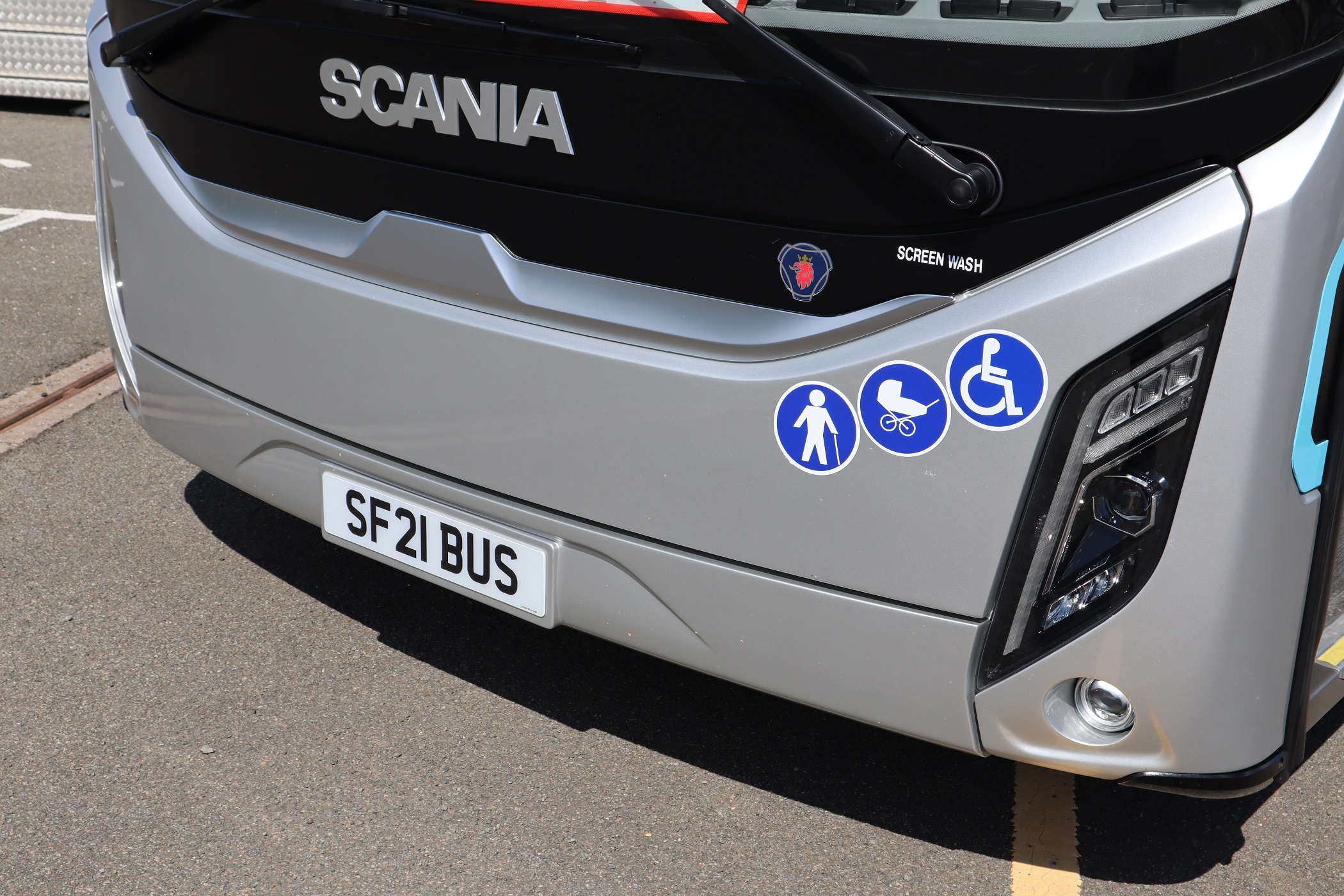
An unusual aspect of the interior is the installation of multi-colour LED strip lighting. It can cycle through different tones, although that function can be deleted.
Every light on the Fencer, inside and out, is LED. Saloon air-conditioning is an option, although the four hopper windows fitted allowed a good breeze through the bus.
One step is present ahead of the rear axle and two more are necessary to access the back row of seats. The latter part of the bus has a rather elevated feel, but necessarily so through a need to rise above the engine and cooling system. Noise insulation is good and intrusion from the DC09 is minimal even when it is under load.
Well suited for higher-speed work
Production Fencers using the next-generation chassis will come with a slightly redesigned cab arrangement, but that on the seed f1 is nonetheless well laid out. Notably, the handbrake is in a good position, although the dashboard and steering wheel – which adjust as one unit – may not go high enough for some taller drivers. The high-specification, air suspended Isringhausen seat is a pleasant touch on the demonstrator.
While subsequent diesel members of the Fencer range will have the Euro VI step E driveline and the EcoLife 2 gearbox, the initial bus has an identical 280bhp and the same type of transmission, albeit in first-generation form. It therefore gives a good idea of how later vehicles can be expected to perform.
In the demonstrator, the EcoLife is in an economy-based setting, and as a result it proceeds through the ratios quickly. Performance is adequate, although if power delivery was favoured in the shift strategy there seems no doubt that take off from stationary could be faster.
A further indication that the diesel-powered Fencer f1 will, when suitably specified internally, be well capable of interurban use or occasional private hire or rail replacement work was given on a dual carriageway stretch outside Milton Keynes. There, it was able to achieve 62mph with ease, which makes it a useful tool for such applications.
Clear promise displayed by first Fencer
The Fencer brand will progressively come to front Scania’s presence in the bus market as new variants debut. On this showing it has a lot of promise, and the manufacturer’s Great Britain business is well on the way already to having aftersales support in place.
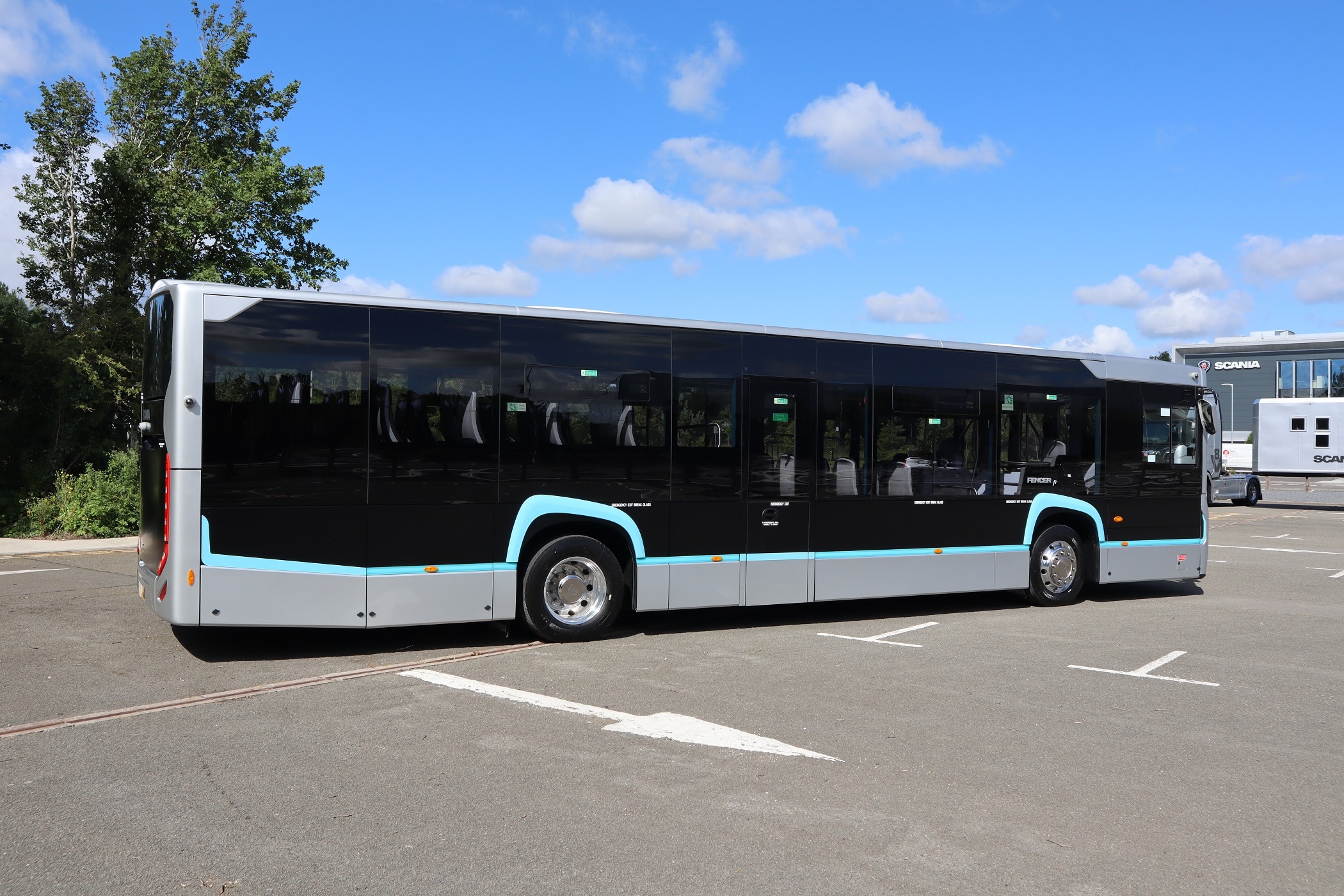
Some potential buyers have viewed the demonstrator, although a true indication of the overall package will be delivered only when the first Fencers with the next-generation chassis arrive.
The ‘big bang’ for the Fencer will likely be with the battery-electric variant.
Higer is a largely unknown quantity in the UK bus industry, although it is present in the coach sector, including through the Scania Touring range. Scania already has a defined product development plan in place for the Fencer range and there is no doubt that it is ready to re-establish itself across the bus market.





















